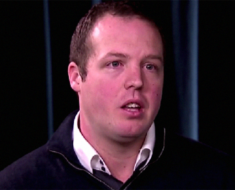
Pexels
For many years, doctors were cautious about diagnosing a child with cerebral palsy. In some cases, this was because a child’s brain does not develop completely until between the ages of three and five. In addition, there is not one test that can pinpoint cerebral palsy, leading doctors to rule out other conditions before diagnosing the child with the disorder. However, the American Academy of Pediatrics now says that early diagnosis may be critical in helping children expand their capabilities.
Delayed Treatment
When a physician delays diagnosis of cerebral palsy, a child could miss essential treatments that might help them develop additional skills that early intervention could have provided. The American Academy of Pediatrics indicates that children who are diagnosed early can receive treatment to improve motor skills and mobility and improve quality of life. In addition, early diagnosis can relieve anxiety in parents who have been trying, sometimes for years, to get a definitive diagnosis for their child.
What Is Cerebral Palsy?
One of the problems with diagnosing cerebral palsy is that the disorder may be one of several different types of non-progressive disturbances that occurred either as the child developed, during birth, or soon after they were born. Children with cerebral palsy may have speech or language impairments, difficulty feeding, bladder issues, hearing and vision problems, intellectual disabilities, hip displacement, seizure disorders, and sleep and behavioral disorders.
Early Treatments
Once a very young child is diagnosed with cerebral palsy, parents should seek programs specifically designed for infants which are different from toddler and school-age programs. An infant’s brain has not developed to the level of a toddler, which would make it difficult for them to manage therapies designed for older children. The program should focus on a child’s development overall.
How Is Cerebral Palsy Diagnosed in Infants?
One of the methods used to identify cerebral palsy in an infant is through Prechtl’s Assessment of General Movements. These can be viewed after a child reaches three months of age. If the child’s GMs are fidgety, a pediatrician may order additional tests to determine if there is a neurological issue that could be causing the unusual movements.
Often, the child is video recorded in two- to five-minute spans when they are awake but not fussy in order to identify a fidgety pattern that may mean cerebral palsy. Another method used is the HINE method which is a neurologic examination designed for infants between 2 and 24 months. The HINE method includes:
- Behavior
- Neurological examination
- Review of developmental milestones
The Developmental Assessment of Young Infants (DAYC) may also be used to identify an infant with cerebral palsy. This assessment is an interactive questionnaire where parents identify milestones the child has reached. DAYC works best with preterm NICU patients who previously would have been identified as having cerebral palsy as late as one year.
Benefits of Early Detection
There are many benefits to the early detection of cerebral palsy beyond the early interventions that may be available. Parents are better able to prepare for the needs of a child with cerebral palsy if it is identified early. In addition, research shows that early intervention of motor and sensory stimuli may help children improve their daily skills, and motor and cognitive function as well as help them live a higher quality of life.
If you believe your child has cerebral palsy and your pediatrician is delaying the diagnosis, you may need to discuss your situation with an attorney. Choosing a specialized and experienced cerebral palsy attorney might help ease the burden. Contact us today to see how we can help you get the attention your child needs in order to give them a better quality of life as they get older.









































